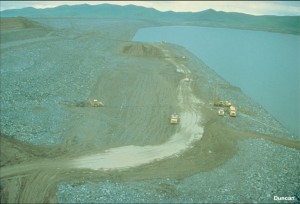The 250-foot high San Luis Dam, about 90 miles southeast of San Francisco, California, stores water on the California Aqueduct System. Water is stored in the Spring when it is plentiful, and released in the Fall when it is needed. These photos show a slide that occurred in the upstream slope of dam in September 1981, as water was being withdrawn from the reservoir.
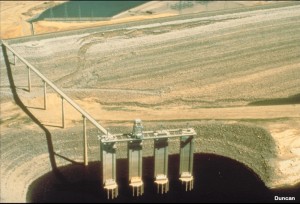
The slide extended for about 1100 feet along the embankment. At the north end, near the inlet-outlet structure visible in this photo, the scarp at the top of the slide was about 30 feet high. At the bottom of the slope the toe of the slide moved horizontally about 30 feet out into the reservoir.
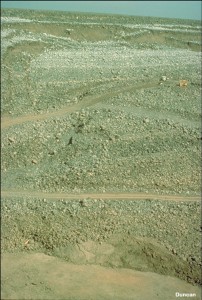
The head scarp and toe bulge are more clearly visible in this photo. Temporary roads have been cut into the slope to provide access for drill rigs. The drill rigs were used to retrieve samples for testing and to install “slope indicators” that were used to measure movements underground.
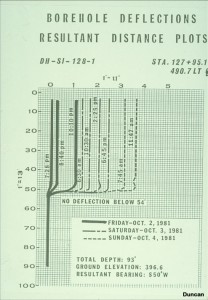
This plot of data from a slope indicator shows a distinct rupture surface at a depth of 52 feet. At this depth the soil is a highly plastic clay called “slope wash,” on which the embankment was constructed.
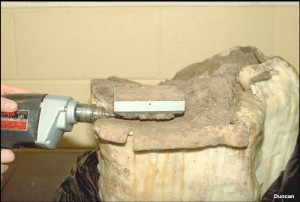
Undisturbed block samples of the slope wash, about 15 inches by 15 inches by 15 inches, were carved from the foundation downstream from the dam, and were transported to the soil mechanics lab at Virginia Tech for testing. In its dry condition the slope wash was nearly as hard as a brick. This photo shows a direct shear test specimen being carved from the block sample using a carbide-tipped drill as a sculpting tool. The tests showed that the slope wash became very weak when wetted. This loss in strength when wetted was the principal cause of the slide.

